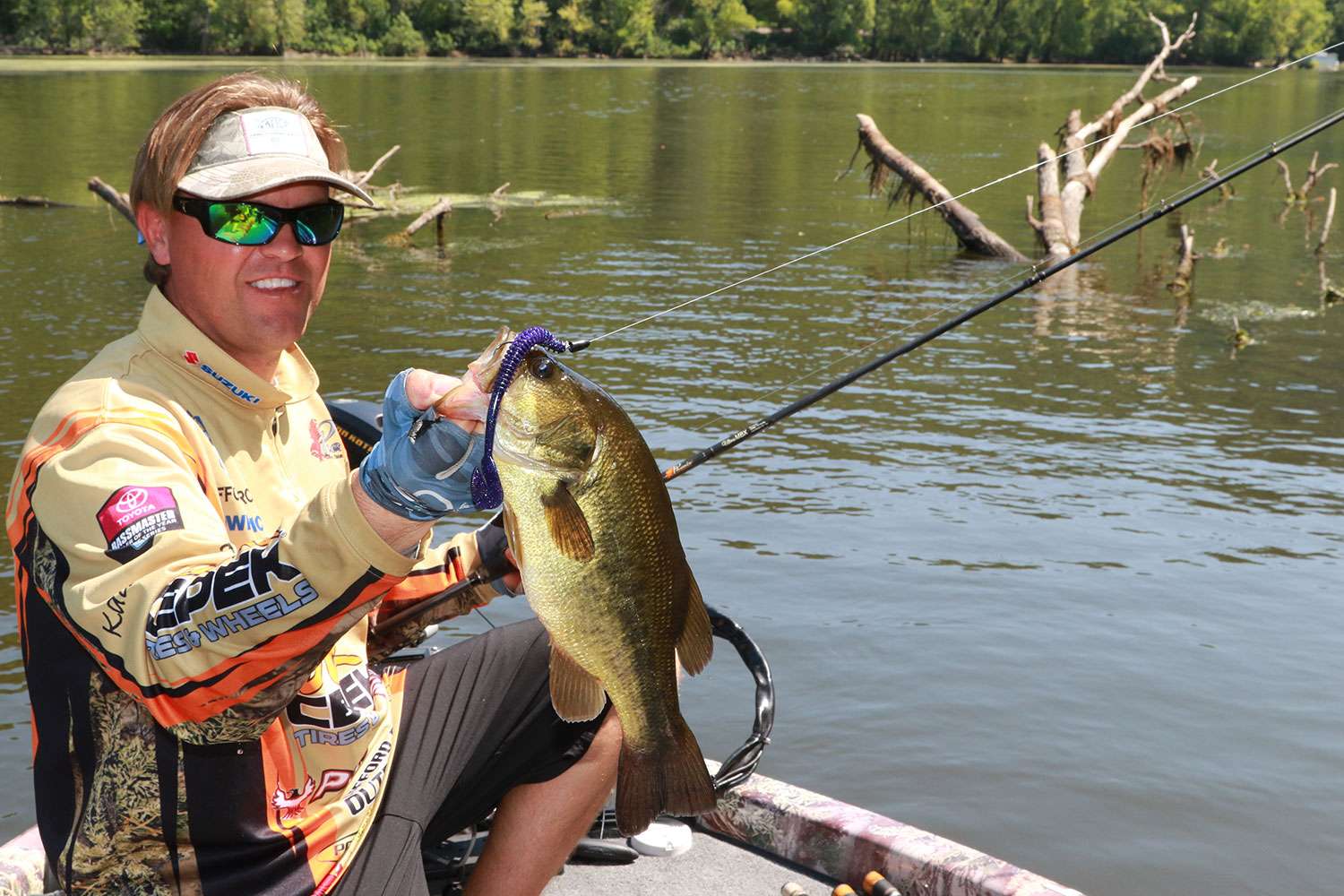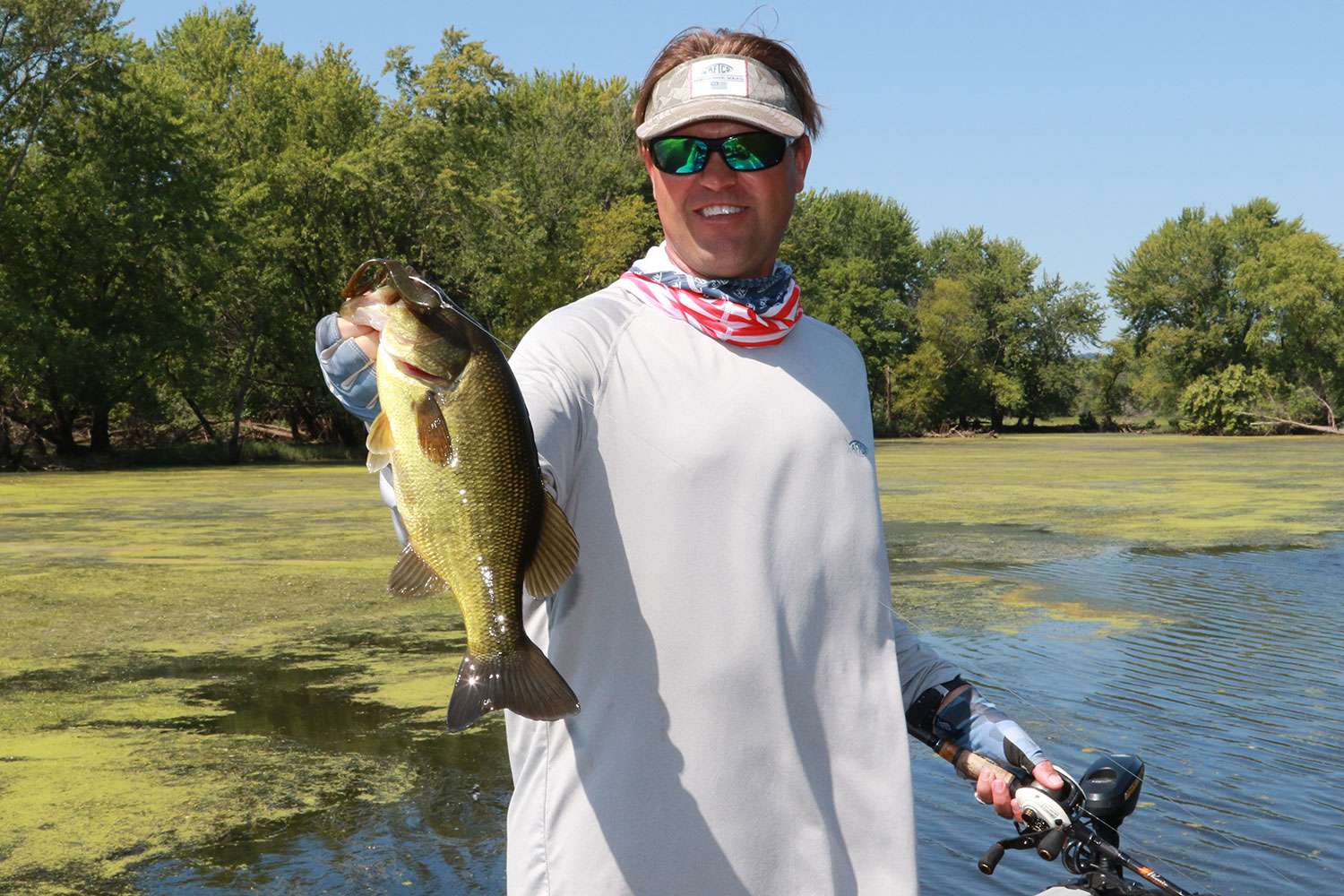
It’s no revelation that Bassmaster Elite Series anglers must have a diverse repertoire= and Cliff Pirch is no exception. However, the accomplished Western pro from Payson, Ariz., has exemplified adaptation by not only learning, but fully embracing several baits and tactics established east of the Mississippi River.
Like most hailing from the Pacific Time Zone, Pirch has shared plenty of West Coast know-how with fellow Elites, but he has also recognized the wisdom of soaking up as much as he can from the nation’s right half.
“You learn that, sometimes, there’s a reason for what they do locally,” he said. “Whether it’s the best way to fish a type of cover, or it just happens to work better than some things.
“Rather than remaining stuck in your ways, you need to play their game sometimes. And there are times when I find that I can use a less common technique on a certain place, but a lot of times, there’s a reason why something works well and you’ve got to go with it.”
A versatile angler with Top 10 finishes from Florida’s St. Johns River to New York’s St. Lawrence River, Pirch has clearly demonstrated his prowess at seamlessly integrating his Western craft with a wide range of Eastern U.S. specialties. That being said, he definitely has is faves.
Swimming worm
Something of an old-school technique established on grassy southern fisheries, the swimming worm provides an effective method for covering water — especially heavily vegetated water — to find active fish. This is something Pirch learned on the St. Johns, where thick eel grass beds harbor fish throughout much of the year.
“We don’t have eel grass in the West and there’s not a lot of things that work well in that cover, but I’ve learned that swimming a worm not only fishes the cover well, but it catches them well,” he said. “That’s something I’ve picked up by fishing in the East that I really didn’t do in the West.”
Pirch’s worm preference is the Big Bite Baits Tour Swim Worm, which features a ribbed body and a paddle tail that includes an angled perforation, which allows him to fish the tail closed or open, depending on how much thump vs. action he needs. He mostly fishes the 7 1/2-inch worm on a 4/0 Hyabusa straight shank worm hook but finds the smaller version works better on fisheries with thin opportunity levels. Weight size varies with depth and current, but 1/4- to 3/16-ounce usually does the trick.
“Every time we go to Florida, the swimming worm is a player, and I caught them really good at Guntersville,” he said. “It works at a number of fisheries, but most of the time, it’s been in and around grass.
“If the fish are spawning, I like to make contact with the bottom, but I’ve seen other times, when just winding the bait really slow like a swimbait over the top of the grass has worked.”
Pirch’s technique tip: Most of the time, he’ll fully separate the Tour Swim Worm’s tail sections for maximum action, but if all that commotion tempts too many bait stealers (small bass or panfish), he’ll keep the paddle tail intact and rely on that thump to tempt the larger fish.
Also, while swimming worms are best known for their grass application, Pirch won’t hesitate to run this enticing presentation across a laydown or past any other shallow wood. Off-color water is usually his cue to try this strategy.

Ned rig
Although it traces its roots to midwest fisheries, the humble Ned rig has flourished throughout Eastern U.S. waters. Notably, Pirch said that, while his earliest exposure failed to impress him, he would realize what he was missing farther down the road.
“I think that watching spotted bass guys get ‘em really good on this bait is what caught my eye,” he said. “I learned about the Ned rig a long time before it got really popular, but I wasn’t smart enough to realize how good it was. In 2006, a guy showed it to me in South Carolina while fishing for suspended spotted bass, but I didn’t like it.
“I didn’t catch them very good on it that day, but if I would have picked it up and played with it some more, I would have made some headway before it got popular. Some guys made a lot of money on the Ned rig before too many people knew about it, but I’ve only been using it the last few years.”
Noting that he’s caught Ned rig fish on rock, wood and in open water, Pirch said he uses the Hyabusa Brush Easy head for lighter presentations, while a homemade head poured by an Arizona pal gets the call for heavier deals. A cut-down piece of a Big Bite Baits Trick Stick is the typical bait choice.
“Anytime I’m fishing for spots or smallmouth, it’s in my arsenal,” he said. “I’ve caught smallmouth pretty good on Lake Champlain and I’ve caught spots pretty good a Lake Logan Martin, but it’s a standard tool in my boat. I always have one in those types of fisheries.”

Buzz frog
Interestingly, Pirch first saw a buzz frog about a dozen years ago on the California Delta, when a co-angler used it rather ineffectively as a flipping presentation. First impressions aside, he quickly took note of the intended topwater use during an event on Florida’s Lake Toho.
“That bait just flat caught ‘em,” he said. “The tournament was won with it, there were several guys catching them on it and I caught quite a few on it. That’s when it really opened my eyes to how good that thing was.”
Pirch rigs a Big Bite Baits Tour Toad on a Hayabusa belly-weighted wide gap hook with a screw lock.
“You get a lot more mileage out of your bait with the screw-in style because if you have a fish blast it, he’ll pull that frog down and mess it up,” Pirch explains. “You can get a follow-up bite really quick and that’s more efficient.”
Such tips, Pirch said, have not only served him well in the heartland of bass fishing; they’ve also helped him put more fish in the boat when he’s back home on Western waters.
“Now, I use these baits all over the country,” he said. “Anytime you put those kind of tools in your tool box, you find new ways to fish them.”





